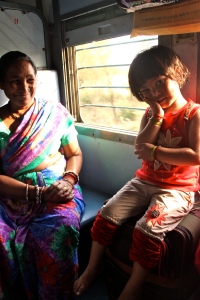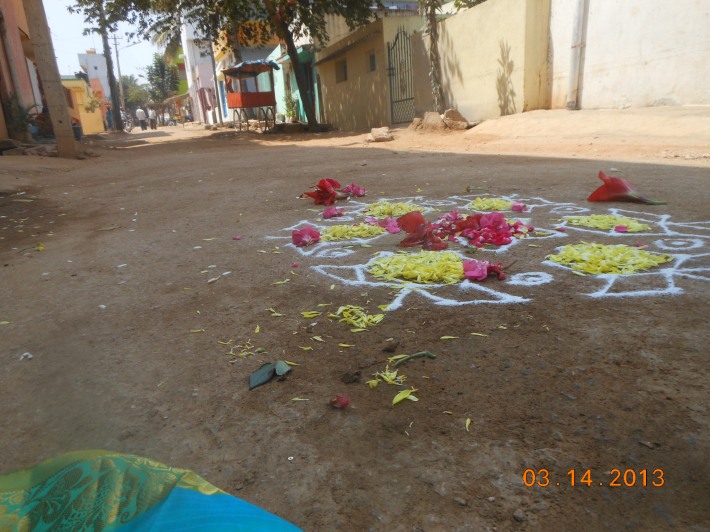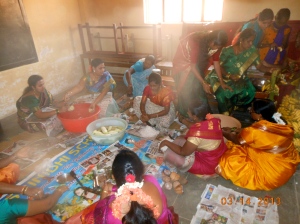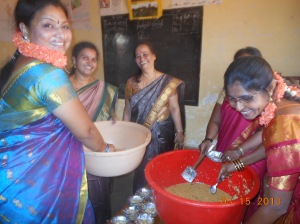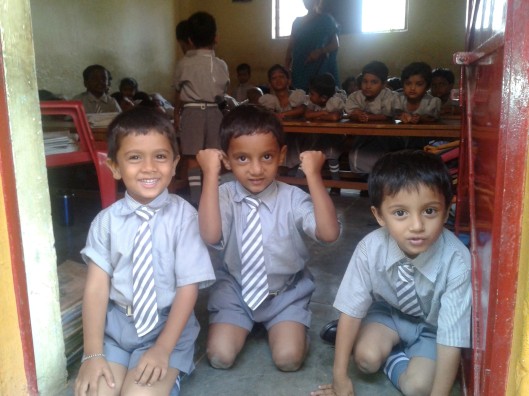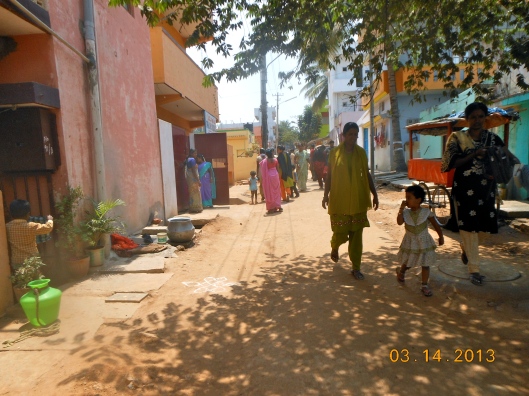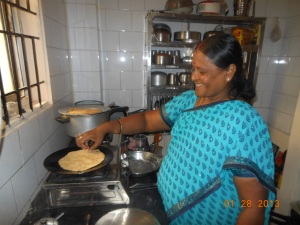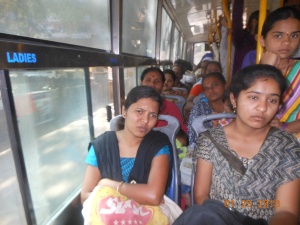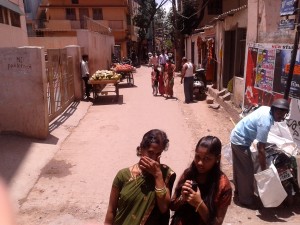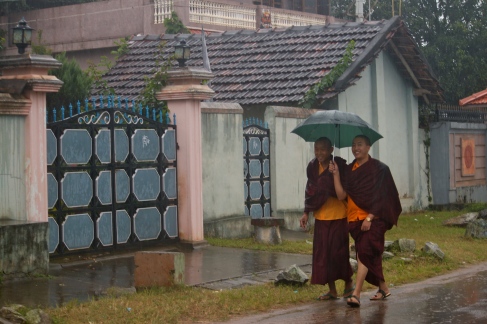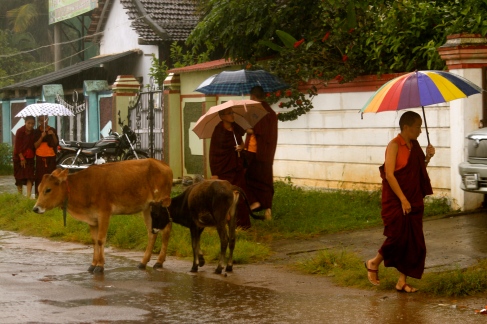Tags
accelerators, Airbnb, community-based social entrepreneurs, incubators, microcredit, Self-Help Groups, social entrepreneurship, UnLtd India, Y Combinator
Ever wonder how Airbnb became one of Sillicon Valley’s hottest billion dollar babies? As the story goes, it all began with a shortage of cash for rent and a few inflatable mattresses. It progressed to $20,000 in credit card debt and a maverick plan of branding fictitious Airbnb (Air Bed and Breakfast at the time) collectable cereal for the 2008 presidential campaign (complete with hand-drawn and hand-glued cartoon Obama and McCain labels) sold at $40 a pop. As the tale goes, after being autographed and auctioned off by Katy Perry and sending a box to every tech blogger from SoMa to SoHo, “Obama O’s” raised $30,000 in working capital and turned three starry-eyed entrepreneurs into pioneers of today’s “share economy“. What began as a problem of sold out accommodation for a San Francisco conference had soon turned two designers and an engineer into Silicon Valley’s latest success story.
That’s at least what the average Joe will tell you… But if we take a closer look, somewhere in-between collectable cereal manufacturers gone billionaires, you’ll find Y Combinator, an A-List entrepreneurial accelerator and bootcamp for elite internet start-ups.
Business accelerators and incubators exist in all shapes and sizes. While The Unreasonable Institute is traditionally a 6-week intensive bootcamp in Boulder, Colorado exclusively for social enterprises with high scale potential, Dreamit Ventures is a multi-city 3-month program for innovators across sectors with locations in Austin, New York, Israel, and a health specific program in Philadelphia in 2013. On the whole, incubators tend to be non-profit or government funded, “managing” and nurturing very early stage ideas and projects over the course of several years. Accelerators on the other hand are typically highly selective profit-driven ventures that take a share of a company in exchange for 2-4 months of intensive mentorship and funding. Incubators and accelerators however, agree with respect to several coveted provisions: funding, business advice, and access to professional networks typically including investors.
Is the world of acceleration, jump-starts and first chances reserved only for the next Mark Zuckerberg or those destined to turn down 9-digit offerings from Mr. Steve Jobs himself (Dropbox [2009], another Y Combinator start-up)? As mentioned before, accelerators and incubators are a diverse bunch and UnLtd India is one such case. A Mumbai-based incubator providing early-stage support for social entrepreneurs, at UnLtd entrepreneurs (or “investees” as they are called) are classified into one of three categories:
- Type A – Those with previous management experience likely in the private sector, and a professional degree from a foreign or top-tier Indian institution.
- Type B – Those who may have experience in the non-profit sector, typically with a strong educational background likely from a local Indian institution.
- Type C – Those who serve his or her community of origin (likely lower-income), and have a limited or very basic educational background.
Despite eligibility and encouragement of investees from all three backgrounds, the portfolio of entrepreneurs at UnLtd remains skewed towards Types A and B. It was this problem at UnLtd in combination with an open-ended IDEX assignment that led a team of four (myself included) spread across three Indian cities into the field with two primary questions: 1.) How does external information enter lower-income communities? And 2.) Once information is there, how does it circulate within the community? The research was aimed at investigating effective channels of communication in lower-income urban and semi-urban communities in Bangalore and Hyderabad. The end goal was to identify steps for strengthening the current pipelines of support that exist for “Type C” community-based social entrepreneurs who are unintentionally marginalized from the start-up ecosystem of support, networks and funding that can make or break any idea, inflatable mattresses, MIT education or otherwise.
Here’s what we found:
- Newspaper and television (opposed to radio and the web) are the two primary media access points for information entering lower-income communities.
- Community members are most receptive to information delivered by known connections as opposed to people they’ve never met.
- Community leaders including school owners and local politicians are key to facilitating the circulation of information within communities.
- Because the notion of “social entrepreneurship” is nonexistent still within lower income areas (as per our research communities), illustrative examples are the most effective way to communicate what we mean by “changemaker”.
- Referral systems for connecting community-based entrepreneurs to existing networks of support for start-ups exist across the ecosystem including Ashoka Youth, however these networks need strengthening in order to become fully effective.
And drum roll please….
In the end, we found one live and well community-based entrepreneur who was operating completely outside of the tight knit ecosystem that exists for social entrepreneurs here in Bangalore! He’s a Guru who runs a yoga and health center, serving over 400 members daily from up to a 10km radius. In addition to yoga and health services his studio serves as an unofficial community center as he provides space free of rental charge for outsiders providing drawing/painting, music, traditional dance, soft skill programs, and community business and party meetings. Additionally, he coordinates and sponsors outside artists i music and dance as well as lecturers for events that run free of charge. It may not sound like much, but in a neighborhood on the outskirts of India’s leading IT hub, this guy is a true gem and work of his kind is a rarity.
ADDITIONAL FINDINGS:
1.) In addition to the above, one intriguing finding (albeit slightly off-topic) was the organic discovery of women’s Self-Help Groups (SHGs), a community-based network and channel of communication in their own right. SHGs, “Songas”, or “Lady’s Group” (as referred to by teachers at school, many of whom are members themselves), exist in plenty in semi-urban northwest Bangalore particularly in and around the school where I had worked for 8 months. According to Jaya Lakshmi, the “carpenter’s wife” who lives on the corner, there are more than 50 Songas within a 2km radius in Bagalagunte (60,000), each of which has 20-25 members and must register with the local MLA (Member of Legislative Assembly) or local government before being officially recognized. Jaya Lakshmi, who turned out to be the self-appointed head of six local SHGs, relayed that every month each Songa member must give Rs.100 (about US $2), which goes into a bank account and is used to give a loan of Rs.20,000 (about $375) each to two members “in need” for use on education (to pay school fees), medical bills, to buy a vehicle for employment purposes, or towards other financial woes (“money problems” as they’re commonly referred to). According to Jaya Lakshmi loans are paid back at 2% interest within 10 months with rates doubling if payments aren’t being made. Nothing adds up, ever in Indian financials. Don’t try to do the math. You’ll just become frustrated.
Apparently the local government allocates funds to the Songas for use on expressed needs such as buying sewing machines to hold tailoring classes or for someone to buy a vegetable cart to start a business. Jaya Lakshmi meets monthly with the MLA himself to discuss the needs expressed by the women of the various Songas. It is clear that Jaya Lakshmi’s hefty involvement with the area Songas is in part a product of her close ties to the current MLA, who allocates community funds, for the Songas and otherwise.
SHG’s like Bagalagunte’s “Songas” are part of the burgeoning “self-help movement”, a community-based and humanistic development strategy with the goal of restructuring societal power. The global SHG phenomena is expected to bring 40 million additional Indian women into the SHG sphere within the next 5 years, product of increased Government of India (GOI) investment that will cut the current average loan interest rate in half from 11-14 to 7 percent via the National Rural Livelihoods Mission (NRLM) scheme. Although with little at face value in common with our search for community-based entrepreneurs in need of incubation, I believe there is great potential in the use of SHGs as a viable communication network within lower-income communities throughout the developing world.
2.) In addition to SHGs, there was a complete lack of consciousness of civic duty among community members with local political leaders generally thought the only ones capable of helping those in need. When asking someone if they knew of anyone who was “helping the poor”, there were typically two responses: 1.) a blank stare often accompanied by a quizzical eyebrow, or 2.) an “mmmm, the MLA or local leaders. They help people.”. After talking with a wide variety of people including several of these “local leaders” deemed financially capable of affecting change, it became clear that there was a disconnect in the community psyche that associated helping others and social good with financial resources and political clout, only. As it turned out, the local political leaders were the ones with fancy houses, who also had family in politics, often only educated through the 12th standard and known for giving financial hand-outs to those in need. “Everyone has their own problems [“money problems”] here…why would we help the poor”?
A philanthropic notion of social good and associated only with those in positions of power made clear one reason why incubators like UnLtd India find it difficult to source investees from a community-based or lower socioeconomic background. Discovering an ingrained and profuse mentality of disempowerment and an absolute lack of consciousness of the power of and opportunities within the social enterprise stratosphere validated our initial call for fieldwork. Only able to scratch the surface with limited time and resources, further research is needed, perhaps with a couple full-time translators at our side as well as a few trusted boxes of Obama O’s. From what I hear, it’s the “Breakfast of Change”.


